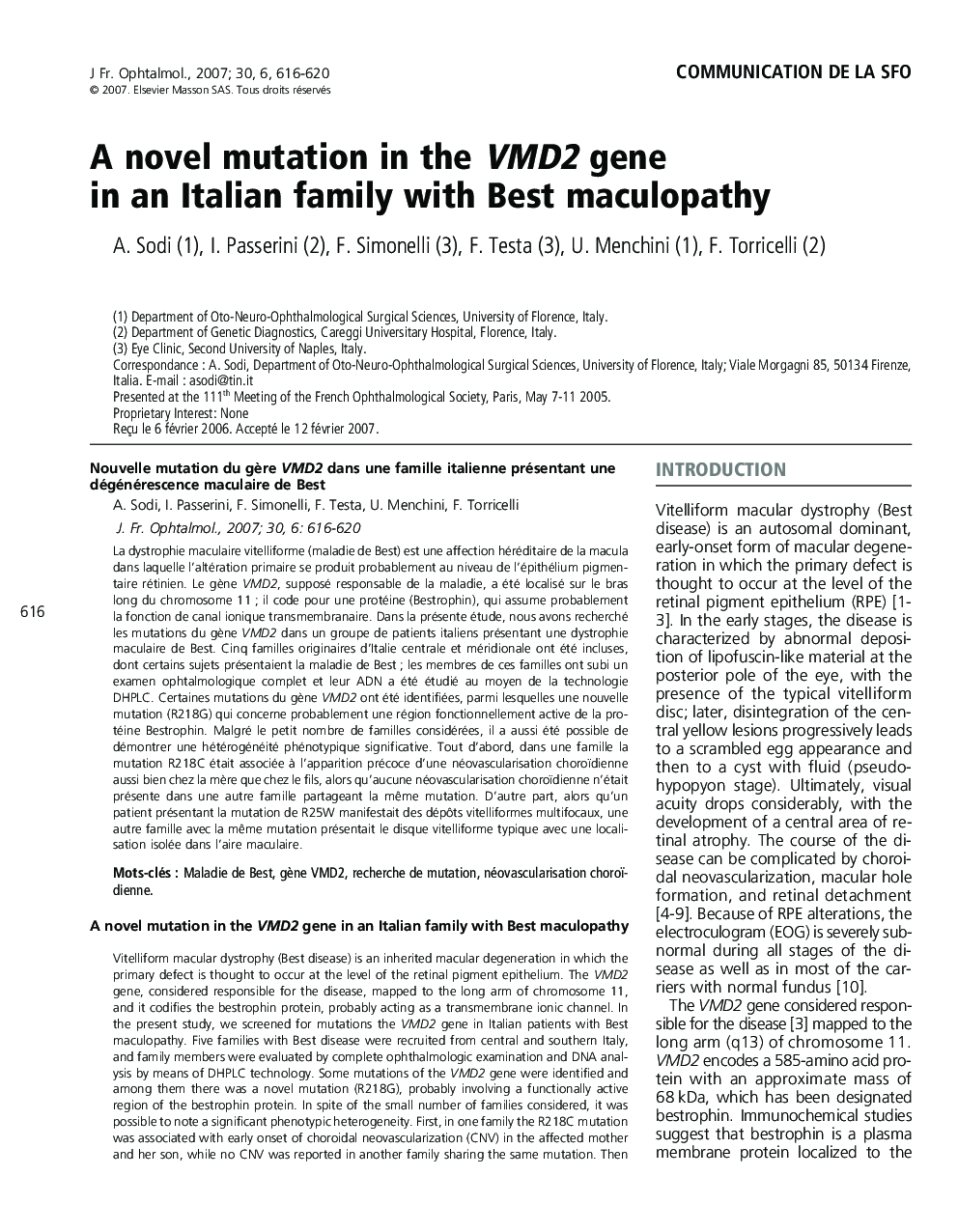| Article ID | Journal | Published Year | Pages | File Type |
|---|---|---|---|---|
| 4025069 | Journal Français d'Ophtalmologie | 2007 | 5 Pages |
Abstract
Vitelliform macular dystrophy (Best disease) is an inherited macular degeneration in which the primary defect is thought to occur at the level of the retinal pigment epithelium. The VMD2 gene, considered responsible for the disease, mapped to the long arm of chromosome 11, and it codifies the bestrophin protein, probably acting as a transmembrane ionic channel. In the present study, we screened for mutations the VMD2 gene in Italian patients with Best maculopathy. Five families with Best disease were recruited from central and southern Italy, and family members were evaluated by complete ophthalmologic examination and DNA analysis by means of DHPLC technology. Some mutations of the VMD2 gene were identified and among them there was a novel mutation (R218G), probably involving a functionally active region of the bestrophin protein. In spite of the small number of families considered, it was possible to note a significant phenotypic heterogeneity. First, in one family the R218C mutation was associated with early onset of choroidal neovascularization (CNV) in the affected mother and her son, while no CNV was reported in another family sharing the same mutation. Then a patient with the R25W mutation showed a multifocal location of the vitelliform deposits, while another family with the same mutation showed a typical isolated vitelliform disc in the macular area.
Related Topics
Health Sciences
Medicine and Dentistry
Ophthalmology
Authors
A. Sodi, I. Passerini, F. Simonelli, F. Testa, U. Menchini, F. Torricelli,
